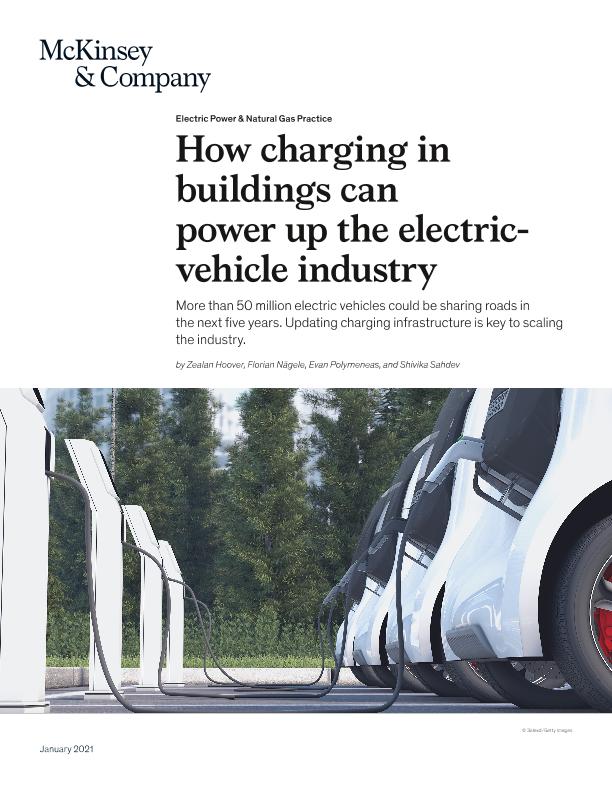How charging in buildings can power up the electric-vehicle industry

Contenido multimedia no disponible por derechos de autor o por acceso restringido. Contacte con la institución para más información.
| Tag | 1 | 2 | Value |
|---|---|---|---|
| LDR | 00000cam a22000004b 4500 | ||
| 001 | MAP20210000836 | ||
| 003 | MAP | ||
| 005 | 20210113095838.0 | ||
| 008 | 190207e20210101usa|||| ||| ||eng d | ||
| 040 | $aMAP$bspa$dMAP | ||
| 084 | $a892.6 | ||
| 245 | 1 | 0 | $aHow charging in buildings can power up the electric-vehicle industry$cZealan Hoover...[et al.] |
| 260 | $aNew York$bMcKinsey & Company$c2021 | ||
| 300 | $a8 p. | ||
| 490 | 0 | $aElectric Power & Natural Gas Practice | |
| 520 | $aE-mobility has reached a tipping point. Morethan 250 new models of battery electric vehicles (BEV) and plug-in hybrid electric vehicles (PHEV) will be introduced in the next two years alone, and as many as 130 million EVs could be sharing roads the world over by 2030.¹ To support these numbers, significantly expanded charging is requiredand it will not be cheap. In fact, an estimated $110 billion to $180 billion must be invested from 2020 to 2030 to satisfy global demand for EV charging stations, both in public spaces and within homes. | ||
| 650 | 4 | $0MAPA20100011164$aVehículos eléctricos | |
| 650 | 4 | $0MAPA20080617219$aIndustria automovilística | |
| 650 | 4 | $0MAPA20080599287$aSuministro eléctrico | |
| 650 | 4 | $0MAPA20110017835$aMovilidad | |
| 700 | 1 | $0MAPA20210000423$aHoover, Zealan | |
| 710 | 2 | $0MAPA20080442569$aMcKinsey & Company | |
| 830 | 0 | $0MAPA20210000430$aElectric Power & Natural Gas Practice |

